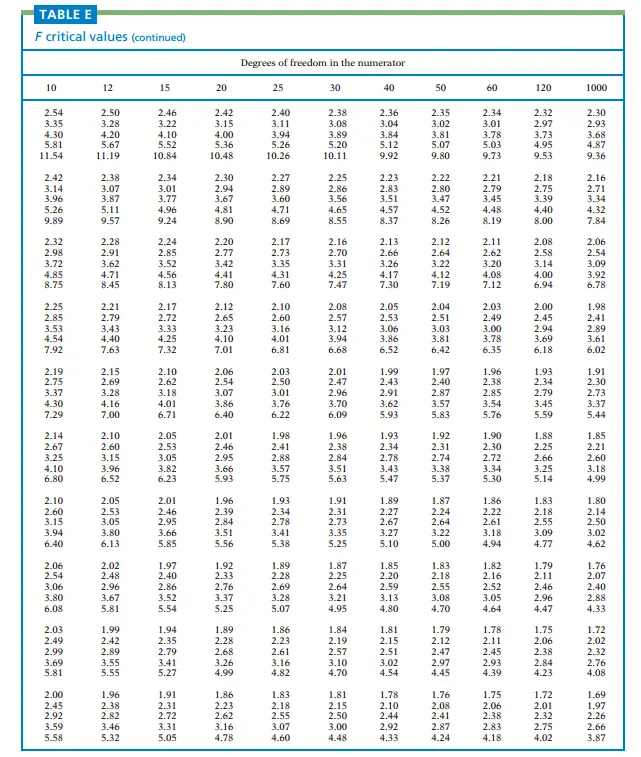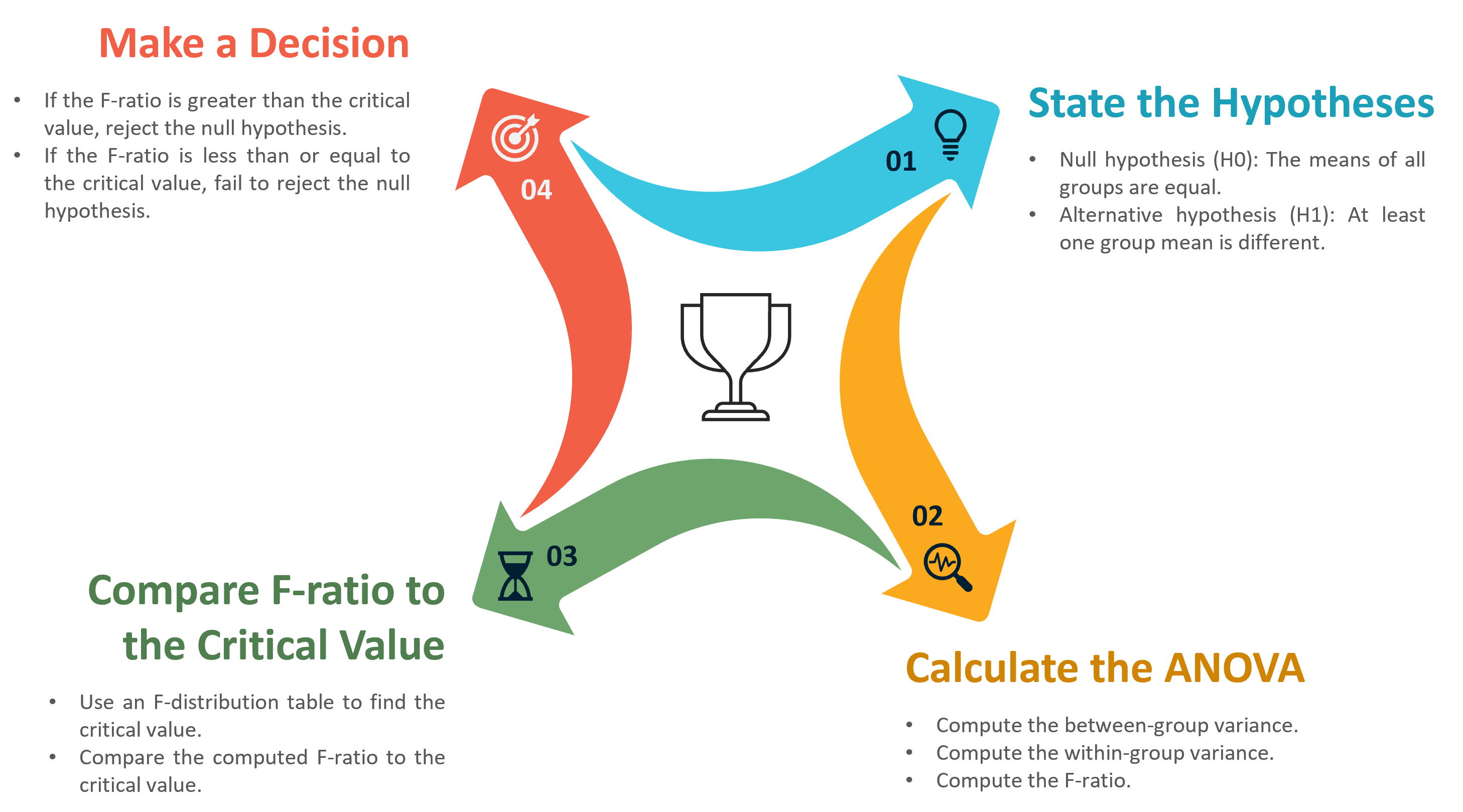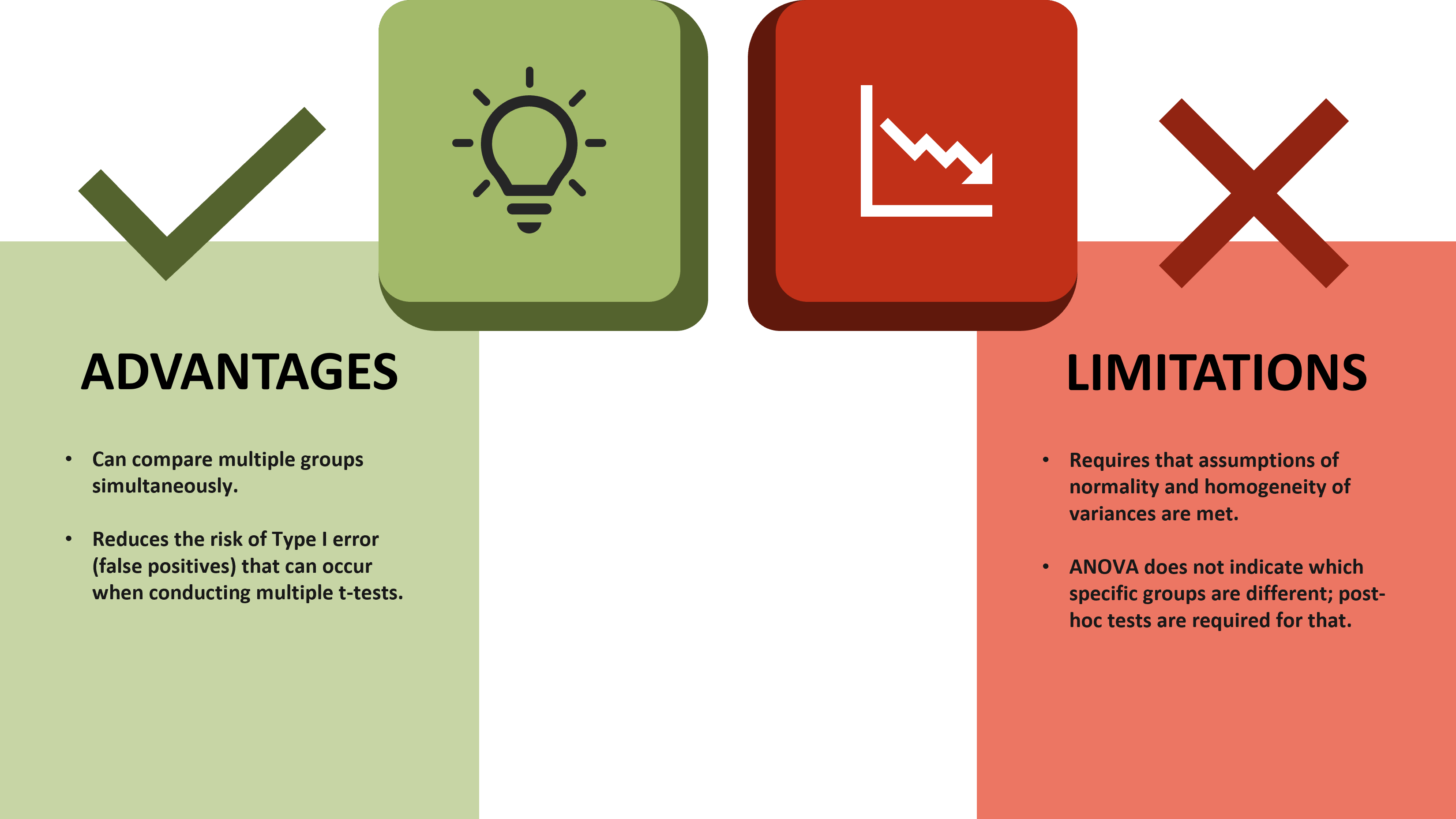WHAT IS ANOVA?
ANOVA (Analysis of Variance) is a statistical method used to test the differences between two or more means. It helps in determining whether any of those means are statistically significantly different from each other. The primary purpose is to test for significant differences among group means in a sample.
How does ANOVA work?
Analysis of Variance works by analyzing the variances within each group and the variances between groups. It calculates an F-statistic, which is the ratio of the variance between the groups to the variance within the groups.
A higher F-value indicates a greater degree of difference between group means.
This F-statistic is then compared to a critical value from the F-distribution table to determine whether the observed differences are statistically significant.

KEY ANOVA CONCEPTS
One-Way ANOVA
This type compares the means of three or more unrelated groups based on one independent variable. It tests the hypothesis that the means of the groups are equal.
Two-Way ANOVA
This type examines the influence of two different categorical independent variables on one continuous dependent variable. It also evaluates if there is an interaction between the two independent variables.
Repeated Measures ANOVA
This type is used when the same subjects are used for each treatment (i.e., repeated measures). It examines the differences in means across multiple tests.
Steps in Conducting ANOVA

When to use Analysis of Variance?
– Comparing three or more groups for statistical differences.
– There is a need to control for one or more confounding variables.
– You want to examine the interaction effect between two or more independent variables.
ASSUMPTIONS OF ANOVA
For Analysis of Variance to be valid, several assumptions must be met:
Independence of Observations: The data collected in each group should be independent of each other.
Normality: The distribution of the residuals (errors) should be approximately normally distributed.
Equal of Variance: The variance among the groups should be roughly equal.
ADVANTAGE vs LIMITATION
